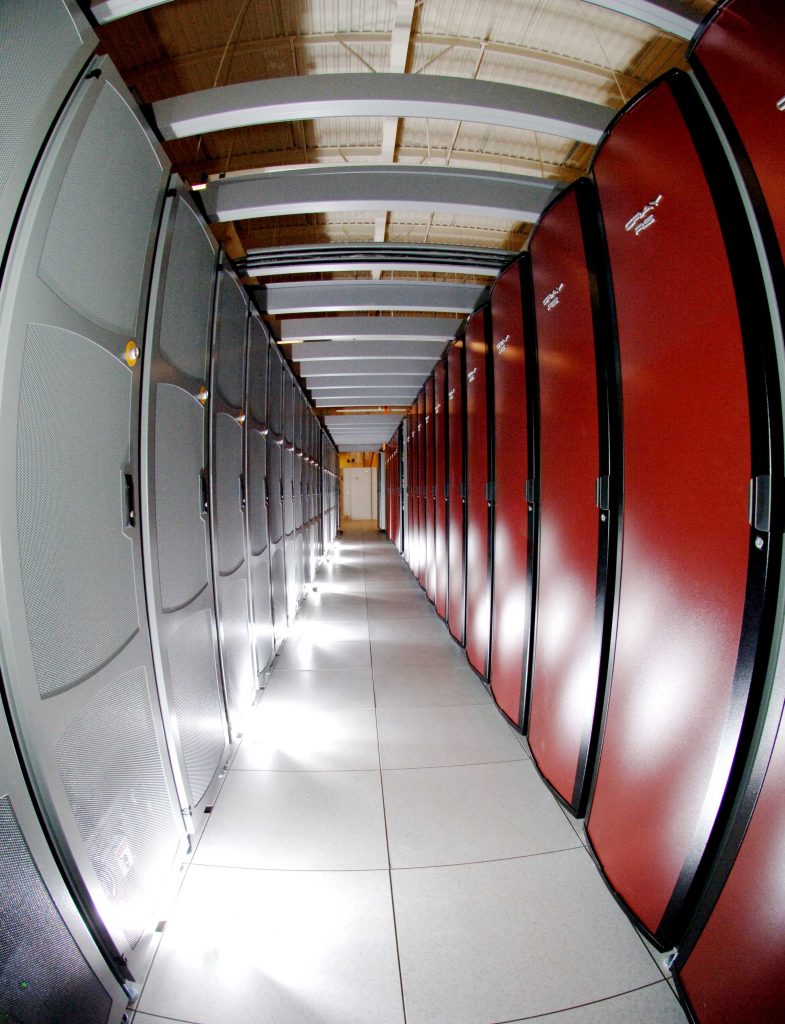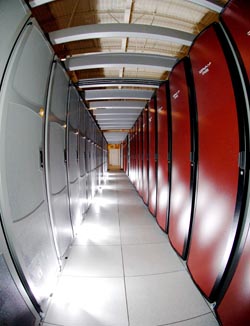
ALBUQUERQUE, NM — Sandia National Laboratories’ Red Storm high-performance computer will get broader use to help solve the nation’s most pressing national challenges now that it has been designated part of a Department of Energy user facility.
Red Storm is the primary computer in the National Security Computing Center (NSCC), a DOE user facility for classified applications that require high-performance computing. The NSCC will operate as a high-performance computing resource for all DOE laboratories in support of the broader national security mission at NNSA. The new NSCC facility can accommodate future computing platforms, upgrades and improvements with minimal interruption.
“The NSCC provides a first if its kind ability for the nation,” said NNSA Administrator Thomas D’Agostino. “It is also one of the first visible steps in NNSA’ s commitment to interagency partnerships and a glimpse of our future science, technology, and engineering enterprise. That fact that our supercomputing capabilities are being used for intelligence missions is also an important example of how our investment in nuclear security is providing the nation the tools to tackle broader national challenges.”
NSCC will be used to help solve pressing national security problems in areas such as cyber defense, vulnerability assessments, informatics (network discovery), and space systems threats. The facility can also be used to provide high-fidelity simulations and advanced imagery processing.
Red Storm’s service as a national security asset began in 2008 when NNSA provided the Red Storm platform to the Missile Defense Agency for mission planning during Operation Burnt Frost. Red Storm helped the very highest levels of US leadership during a missile intercept of a failing U.S. satellite, rapidly completing important simulations of the satellite shoot-down event.
NNSA directed Sandia to transform one of its nuclear weapons computing facilities into the NSCC for broader national security missions. In 2008, NNSA supported Sandia in upgrading Red Storm to a 280-teraflop computing capacity that would sustain its use for another four to five years.
Sandia’s extensive track record in building and running cost-effective and robust HPC systems in both classified and unclassified environments made it a logical choice to host an NSCC system. Many of Sandia’s computer systems, including the recently completed Red Sky, are designed to be expanded economically to several times their initial capacity to meet future growth in demand.
